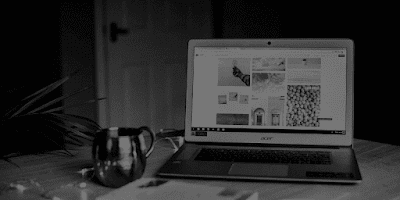EXCHANGE RECOVERY USEFULNESS


Have you deleted a file on your computer, and now you desperately need it? Luckily, there are some ways to recover deleted files in Windows. In this tutorial we show you the three easiest.
Deleted does not equal lost

Luckily, software developers are especially sensitive to
the immutable laws of bad luck, which is why they have created emergency tools
that allow us to protect ourselves from it.
Recovering deleted files in Windows is comparatively
simple, because there are many methods to realize it. Even Windows comes
standard with restoration tools. It is more difficult to recover them in full,
especially if it has been a while since they were deleted.
We are going to show you several methods to recover deleted
files in Windows. The first is that the tool to recover previous versions of
Windows files. We will also use the well-known free program, and professional
software such as Unistal Quick Windows Data Recovery.
Use
the Windows Recovery Tool
It seems that you simply have deleted a file that you now
need. Have you checked to see if it's in the trash? It sounds like a wise
mother's phrase, but sometimes it works ... Especially if you don't usually
empty the Windows trash.
If it isn't there, it is time to use the Windows data recovery tool. It
not only serves to seek out deleted files, but you'll also recover previous
versions of a file that you simply have modified. For example, if you have
altered a document and you don't like how it turned out, now you can go back to
a previous version.
From the pc icon on the Windows desktop, or using the File
Explorer, enter the folder where the file you would like to recover was.
Right-click on a blank space in the folder or file that you want to revert to a
previous version. Select the Properties command, and tap on the Previous
Versions tab:
In the window you will see the previous versions of the
file or folder you have selected. If it's a folder, enter it and there you'll
find the deleted files that you simply had lost. Be careful because if you
restore one, the current version of that file or folder will be deleted, if it
exists.
Keep in mind that this system to recover deleted files in
Windows only works if you have made frequent backup copies, or have created
restore points, and the files or folders that you want to resuscitate are
within those copies.
If you don't get results, it is time to use a specialized
program.
Recover
Deleted Files with Unistal’s Quick Recovery Software
There are many programs specialized in recovering deleted
files in Windows 10, both free and paid. If we've chosen it, it's because it's
free, it's constantly updated, and it's been well valued by the experts. This windows data recovery software
uses military data recovery algorithms, supports new disk formats, and performs
deep analysis that allows you to extract files that were deleted months ago, or
have been overwritten. It also recovers files from formatted or damaged disks.
And it works with SD cards and pen drives.
Download software from its official website and install it.
The program starts with an assistant, but to find out the way to use it it's
better to cancel it. We are going to do custom searches.
Tap on the choices button within the main window and in
Languages, look for preferred language. So you will have the program in our
language:
Its use is very simple. You simply have to choose the drive
you want to scan from the sliding menu at the top, and press the Scan button. Software
will try to recover deleted files on the entire drive. If you only need a
specific file or folder, you can write its name (or part of it) in the box with
the magnifying glass icon:
After a couple of seconds the list of deleted files found
will appear. They will have random names because this is data that is rarely
kept, but the content is important. A red, orange or green button indicates how
damaged the file is. You can recover the greens almost completely. The rest,
only partially. But it can be enough if it is a text or a photo:
If you click on a file, you'll be ready to see what it
contains within the Preview window on the proper.
Mark the files you would like to save lots of and click on
Recover. Then choose the location where you want to save them, let software do
its work, and examine the files to see if they have been saved.
Comments
Post a Comment